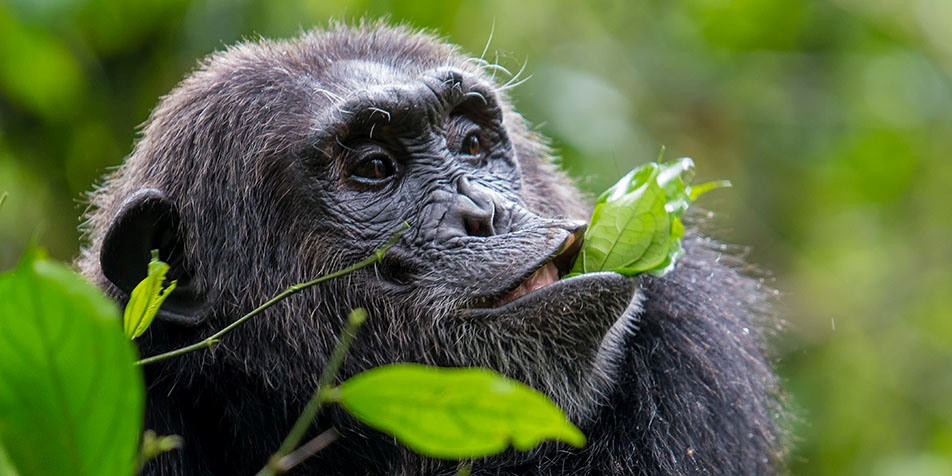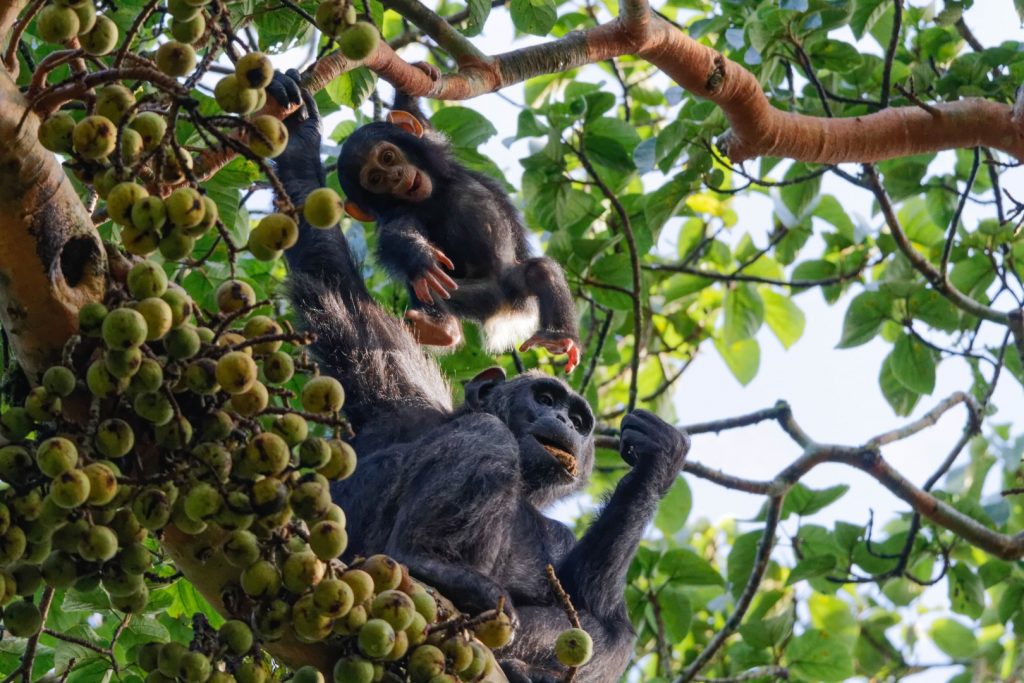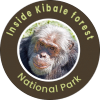
Chimpanzee diet vary among different species but many of them are frugivorous. One study actually found that many primates, including black-and-white colobus monkeys (Colobus guereza) eat younger leaves more than the older leaves. This is so because the leaves have more protein and are easier to digest.
However, 60 percent of the food for chimps of Kibale National Park is contributed from fruits. The other percentage is from insects, meat, soil, flowers, shoots, stems and other plant parts.
Once a visitor takes on a chimpanzee habituation safari, more of this can be experienced
Chimpanzee Diet with Fruits

Chimps mostly feed on the fig tree fruits as their major loved fruits, however they can also feed on other tree fruits. Fruit is the main component of the chimpanzee diet, and they spend at least four hours a day finding and eating varieties of this food. In the afternoon, chimps usually spend about an hour or two feeding on young leaves.
The vegetables that chimpanzees eat give them a fair amount of protein, but they need a little more. In the past they were thought to be exclusively herbivores, but now it is known that they eat less than 2 percent of meat in their usual diet.
Males consume more meat than females who get their proteins mainly from insects, they are occasionally seen hunting. Chimps are often observed catching termites with the help of a stick or twig that they introduce in the termite nest. Once the insects climb to the tool, the chimpanzee takes it out and eats it as its recently caught food. From time to time they can also consume caterpillars.
Chimpanzees and Other Species
They spend almost all day eating, but feeding is an activity done mainly individually. During the first hours of the morning they begin to consume almost everything they have near, but after a few hours they become more selective and start choosing the leaves that have more water and the ripe fruits. On average, they spend 6 to 8 hours feeding, per day.
Although they do not stand out as hunters, chimpanzees can hunt small vertebrates, mainly antelopes such as the blue duiker (Philantomba monticola) and monkeys. But sometimes they even feed on wild boars, birds and their eggs. The species that common chimpanzees hunt are the western red colobus monkey (Procolobus badius), the red-tailed monkey (Cercopithecus ascanius) and the yellow baboon (Papio cynocephalus).
Hunting is a group activity. If it is a small monkey, a chimpanzee can go through the trees to get it, but in the case of needing help, each member of the group has a hunting role. Some chase the prey, others block the way, and others hide and ambush it. Once the animal is dead, they share the meat among all the members of the group. Bonobos hunt less often, but if they have the opportunity they catch termites, flying squirrels, and duikers.
There have been cases of cannibalism of common chimpanzees in the wild and bonobos in captivity. They are not frequent, but they can happen. Pan troglodytes can kill and eat members of other communities
